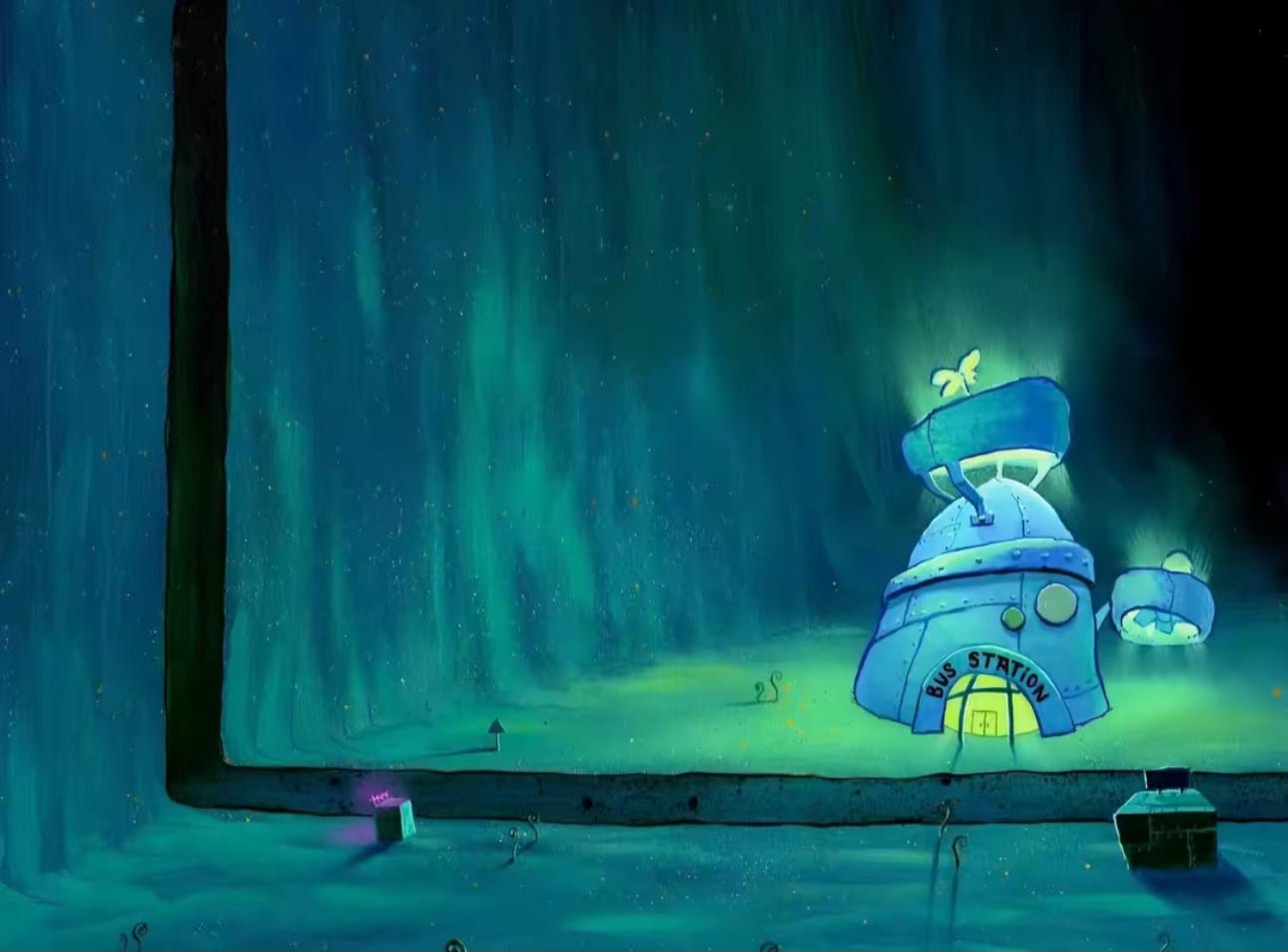I had a dream, wandering through an empty airport at night, fluorescent lights buzzing, endless moving walkways stretching. No flights, no people, just the faint echo of an announcement I couldn’t quite understand. It felt familiar, like I’d been there before, but I couldn’t remember when. Liminal spaces are surreal just like that, like déjà vu. If I could gather my thoughts clearly, I’d say it feels like waking up from a hot Sunday afternoon nap with the radio playing some old country song in the background. That hazy, disoriented feeling.
There’s a lot of intention behind liminal spaces. Some people just describe them as "backrooms," and sure, I get that. They can feel vast, rudimentary, almost hopeless, like a place you accidentally wandered into but shouldn’t be in. But not all liminal spaces feel creepy. Some are just... nostalgic and strangely comforting. They remind you of a weird kind of loneliness you once knew.
I think the key to capturing that feeling is, paradoxically, nothing. Like literally nothing. The space needs to be raw, lonely, cold. In film, liminal spaces create a sense of being lost, both physically and emotionally. Take Vivarium, for example, with its endless rows of identical houses. The very repetition of the setting creates a deep unease. But I also think every liminal space should have a lore. Now, yeah, this is debatable, but when you look at a liminal space, there’s always some kind of story hiding in the background. Even when you don’t know exactly what you’re looking at, you can sense its history.
Kubrick’s The Shining is the blueprint for this—the long, empty hallways, the weird sense that something’s just off, the stillness to disorient the viewer. And then there’s Lynch’s Mulholland Drive, which leans into a dreamscape of endless LA roads that feel like a fever dream. Requiem for a Dream also does something similar, making reality feel unstable with its lighting and framing. Ironically, unlike how vast liminal spaces are, Requiem for a Dream embodied a suffocating atmosphere that still emulated that eerie feel. It’s all kind of like uncanny valley. Not exactly the same, but close. That feeling of something being almost human, almost normal, but not quite. No wonder The Polar Express freaked us out as kids.
But there’s an important distinction between liminal spaces and backrooms. While backrooms stem from the concept of liminality, not all liminal spaces are backrooms. I might contradict myself here because I mentioned earlier that liminal spaces have a story, which I still stand by, but not all the lores are as creepy to define them as backrooms. Backrooms thrive on horror, pure and simple. They have monsters, fear, paranoia. Liminal spaces? Some are just weirdly wistful. Even cartoons have this vibe. Think Tom and Jerry, Courage the Cowardly Dog, or my favorite, Scooby-Doo on Zombie Island. Not the whole shows, but just picture certain scenes, the empty streets, the spectral lighting. The way everything looks just a little too still.
But enough about what they make us feel. What even are they? According to Google, liminal is defined as:
A transitional or intermediate stage, space, or state. It comes from the Latin word limen, meaning "threshold.
I pondered over it, trying to connect it to the images I kept seeing. Bare hallways, empty playgrounds, what do those have to do with thresholds? Then it clicked. These places exist between destinations. Airports, school hallways, stairwells, spaces meant for passing through and never to stay. And on a cultural level, liminal spaces also mark transitions in life, like rites of passage, moving from one stage to another. That’s why an abandoned playground doesn’t just feel empty, it carries the weight of what once was and what is now.
A sizeable analogy I can use to describe this is SpongeBob SquarePants: Rock Bottom. In this episode, SpongeBob and Patrick are heading home from Glove World but take the wrong bus, stranding them in the strangest of places, Rock Bottom. The episode captures liminality in two ways: through its cinematography and its theme of being trapped in transition. SpongeBob is stuck, desperately trying to return home, highlighting the unease of being caught between places. The animation’s rough, drafty style, especially for a late ‘90s episode, adds to the sense of longing, not just for SpongeBob’s return to Bikini Bottom, but for the familiarity of childhood itself.
And there’s the music used as a medium of liminality. When researching the sounds of liminal spaces, I had to ask: What makes them so unsettling? Turns out, it’s all about dissonance and the unexpected. And what better way to describe it than hearing the Severance main theme song? Severance Theme Song .The use of minimalistic melodies and soft synthesizers shapes the otherworldly atmosphere, creating a sense of suspended time. Then, there are the sustained chords that evoke the feeling of “being stuck in between.” Finally, the dissonant intervals that give a sense of ambiguity or confusion and a trance-like state.
Liminal spaces blur the line between familiarity and the unknown, evoking a sense of transition and displacement. Whether in film, music, or memory, they linger just briefly, like the rites of passage they represent.







I was already thinking about the Severance reference before I finished reading, and then you included it! Your insights are spot-on